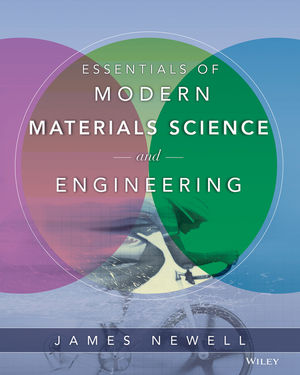|
Textbook
Essentials of Modern Materials Science and EngineeringISBN: 978-0-471-75365-0
Paperback
368 pages
December 2008, ©2009
 |
||||||
- It’s practical and applicable. It is our goal for students, after completing the course and using this text, that they are prepared to make informed materials selection decisions.
- It’s balanced. A variety of materials are presented to provide a broad overview of materials available to engineers.
- It’s visual. This book strong use of visuals help students understand the concepts better than simply reading about them.
- Conversational Tone: The book is written in a conversational tone, designed to facilitate student learning. When I piloted the text in my Materials Science class, the anonymous comments from students included statements like “I didn’t need to read it five times to start to understand it.”
- Learning Objectives: Detailed learning objectives at the beginning of each chapter let the student know the specific goals of the chapter – what should you be able to do if you really understand the material.
- Homework Problems: The homework problems at the end of the chapter are a blend of numerical questions (Calculate the tensile strength of a 0.509 in2 beam…) and more open-ended qualitative questions (Compare and contrast the advantages and disadvantages of fillings made from dental composites with those made from amalgam) that require a deeper understanding to answer (and are much harder to copy).



